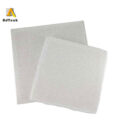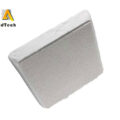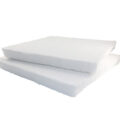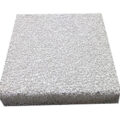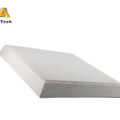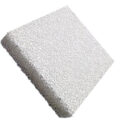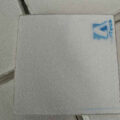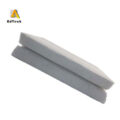Ceramic foam filters and their applications in the field of liquid casting alloy filtration have been developed by leaps and bounds through the efforts of foundry workers.
The experiment proved:
1. The strength and service temperature of the sintered ceramic foam filter is higher than that of the bonded ceramic foam filter of the same material, so its application range is wider, but the cost is also higher.
2. In similar filters, the higher the open porosity, the lower the bulk density and strength.
3. The order of foam ceramic filter materials with the highest service temperature from high to low is partially stabilized zirconia-corundum-silicon carbide-mullite (high alumina bauxite). Part of the stabilized zirconia is especially suitable for various high-temperature alloys, corundum is more suitable for cast steel, silicon carbide is more suitable for cast iron, and mullite (high alumina bauxite) is suitable for cast iron and non-ferrous alloys.
4. After the corundum ceramic foam filter is toughened with zirconia, the strength is not reduced, but the thermal shock resistance is significantly improved, which can expand its application range.
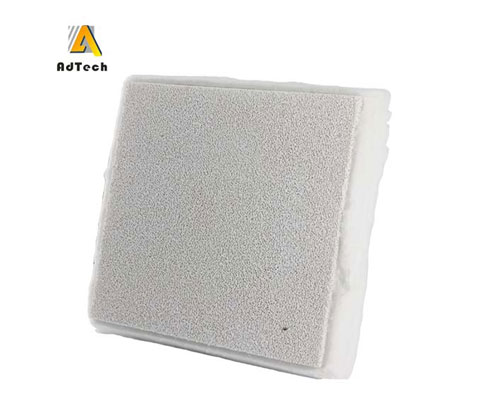
According to incomplete statistics, nearly ten foam ceramic filter production lines have been put into production in China so far, and the annual production volume has reached several million pieces. However, it is estimated that the potential annual demand of my country’s foundry industry is about 100 million pieces.
Therefore, in the new century, the research, Ceramic Foam Filters production and Applications promotion of ceramic foam filters need to be continuously strengthened, and the work should focus on the following aspects:
1. Develop and produce new low-cost ceramic foam filters with low sintering temperature and short sintering time.
2. Develop and produce new foam ceramic filters suitable for various active alloys and stable high temperature physical and chemical properties.
3. Develop and produce special-shaped foam ceramic filters suitable for special casting processes such as investment casting and metal mold casting.
4. In-depth study of the filtration and purification mechanism of foam ceramic filters and the mechanism of influence on the metal solidification process.
5. The systematic study of the application technology of ceramic foam filters, including the selection of pore size and thickness, the placement method and the design of the pouring system, the pouring temperature and speed, and the control of the metal hydraulic head.
6. Carry out the serialization and standardization of ceramic foam filters.



